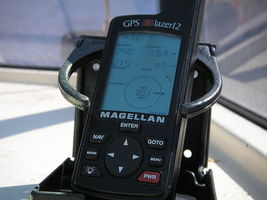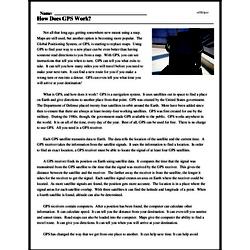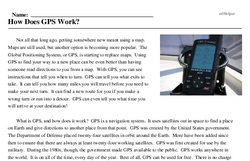How Does GPS Work?
Not all that long ago, getting somewhere new meant using a map. Maps are still used, but another option is becoming more popular. The Global Positioning System, or GPS, is starting to replace maps. Using GPS to find your way to a new place can be even better than having someone read directions to you from a map. With GPS, you can see instructions that tell you when to turn. GPS can tell you what exits to take. It can tell you how many miles you will travel before you need to make your next turn. It can find a new route for you if you make a wrong turn or run into a detour. GPS can even tell you what time you will arrive at your destination!
What is GPS, and how does it work? GPS is a navigation system. It uses satellites out in space to find a place on Earth and give directions to another place from that point. GPS was created by the United States government. The Department of Defense placed twenty-four satellites in orbit around the Earth. More have been added since then to ensure that there are always at least twenty-four working satellites. GPS was first created for use by the military. During the 1980s, though, the government made GPS available to the public. GPS works anywhere in the world. It is on all of the time, every day of the year. Best of all, GPS can be used for free. There is no charge to use GPS. All you need is a GPS receiver.
Each GPS satellite transmits data to Earth. The data tells the location of the satellite and the current time. A GPS receiver takes the information from the satellite signals. It uses the information to find a location. In order to find an exact location, a GPS receiver must be able to locate the signal of at least four GPS satellites.




